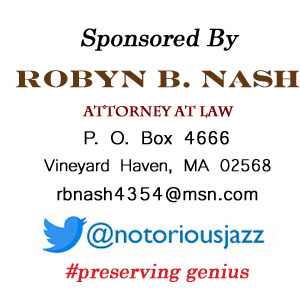
Daily Dose Of Jazz…
Baby Laurence was born Laurence Donald Jackson on Feb 24, 1921 in Baltimore, Maryland. He was a boy soprano at age twelve, singing with McKinney’s Cotton Pickers. When the bandleader Don Redman came to town and heard Jackson, he asked his mother if he could take the boy on the road. She agreed, providing her son traveled with a tutor. Touring on the Loewe’s circuit, his first time in New York City was marked by a visit to the Hoofers Club in Harlem, where he saw the tap dancing of Honi Coles, Raymond Winfield, Roland Holder, and Harold Mablin.
>Returning home sometime later he discovered both his parents had died in a fire. He and his brother formed a vocal group called The Four Buds and tried to establish themselves in New York. He worked in the Harlem nightclub owned by the retired dancer Dickie Wells, who nicknamed him “Baby” and encouraged his dancing. He frequented the Hoofers Club, absorbing ideas and picking up steps from Eddie Rector, Pete Nugent, Toots Davis, Jack Wiggins, and Teddy Hale, who became his chief dancing rival. Baby worked after-hour sessions, danced around Harlem, Washington, D.C., and Cincinnati, and began playing theaters such as Harlem’s Apollo in the late 1930s. He performed with a group called The Six Merry Scotchmen or the Harlem Highlanders, who dressed in kilts, danced, and sang Jimmie Lunceford arrangements in five-part harmony.
By 1940 Baby was focused on tap dancing and became a soloist. Through the decade, he danced with the big bands of Duke Ellington, Count Basie and Woody Herman, and in the Fifties danced in small Harlem jazz clubs. Under the influence of jazz saxophonist Charlie Parker and other bebop musicians, Laurence expanded tap technique into jazz dancing. He performed with Art Tatum, duplicating in his feet what Tatum played with his fingers. Through listening hard to Parker, Dizzy Gillespie, and Bud Powell as well as drummers like Max Roach, he developed a way of improvising solo lines and variations as much as a horn man as a percussionist.
Beset by drugs, alcohol, and financial troubles, Laurence stopped performing in the late fifties. After a long illness, he returned to Harlem in the early sixties to work again in small jazz clubs. Baby began a long time engagement with Charlie Mingus, danced with Max Roach, and would go on to tap dance sessions at the Jazz Museum, dance with Josephine Baker, did some television and gave one of his triumphant performances at the Newport-New York Jazz Festival.
Regarded as an authentic jazz dancer, he further developed the art of tap dancing by treating the body as a percussive instrument. Baby Laurence, an extraordinary jazz tap dancer who had a profound influence on rhythm dancers in the second half of the twentieth century, passed away on Apr 2, 1974.
More Posts: dance,history,instrumental,jazz,music


